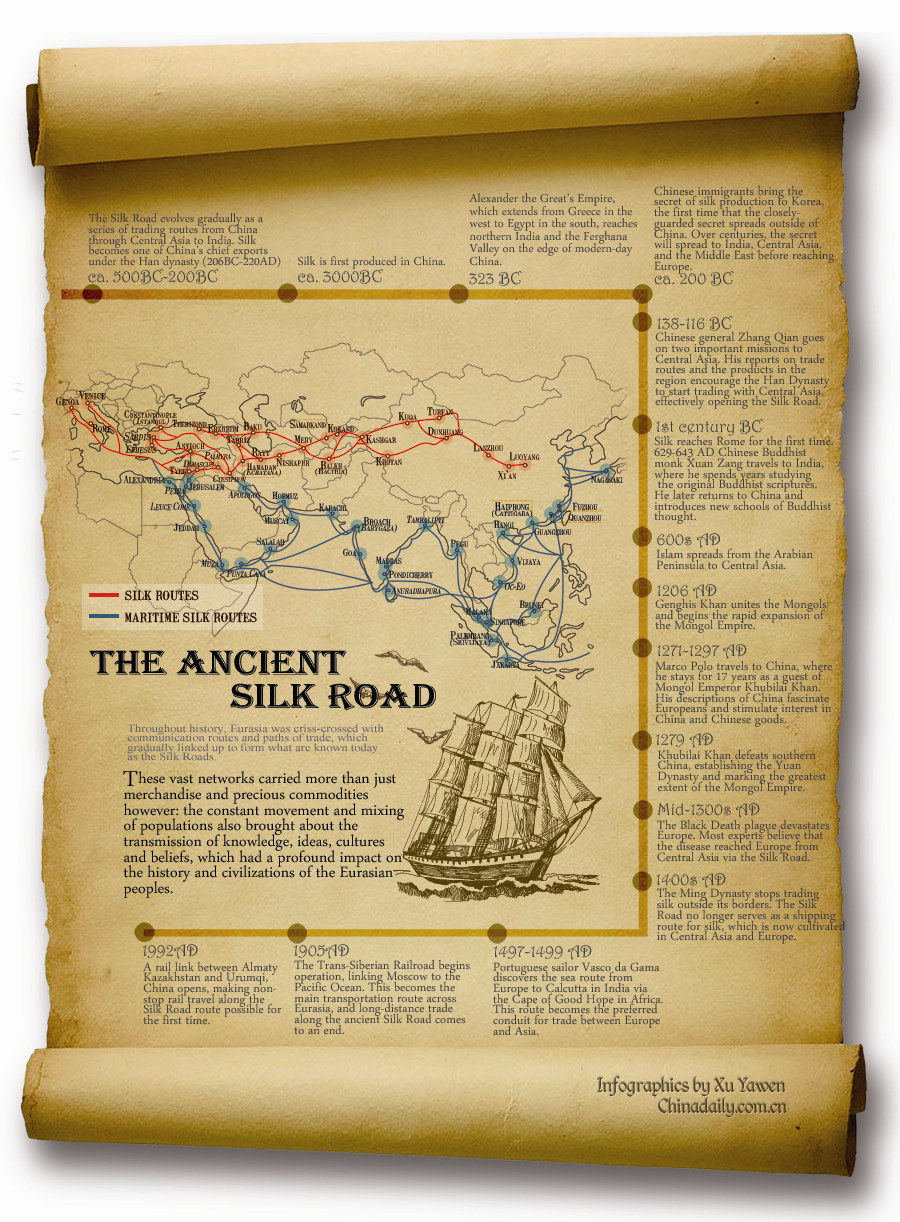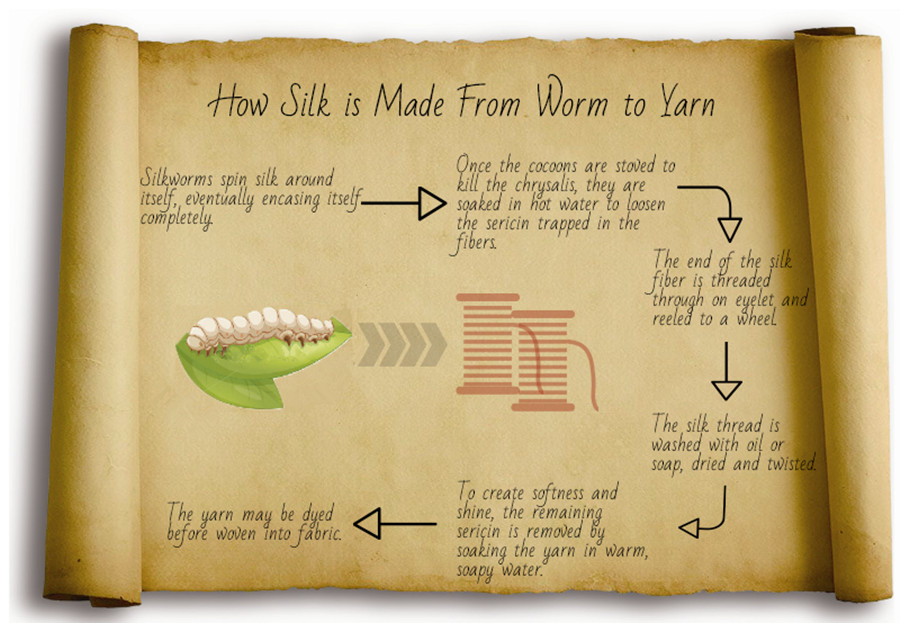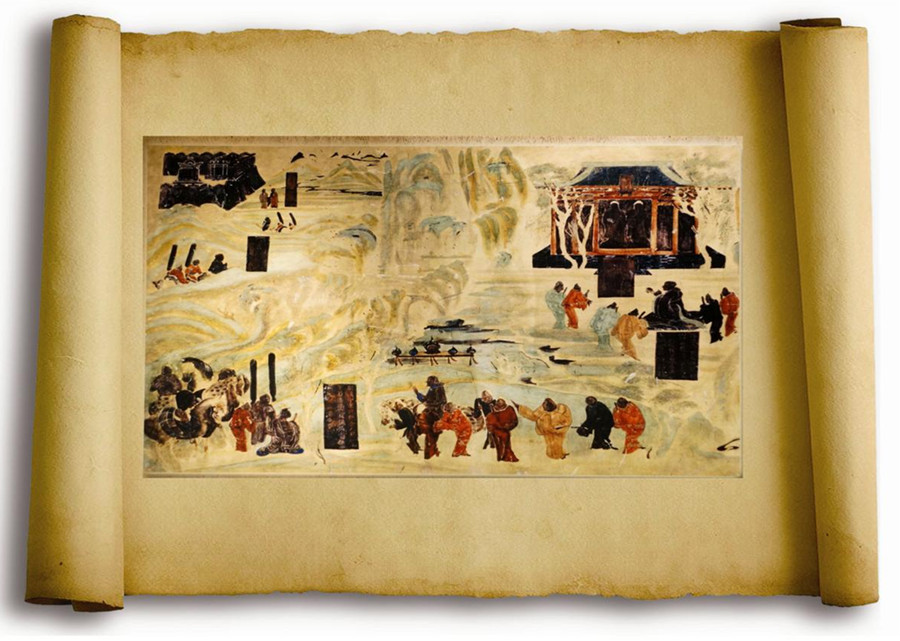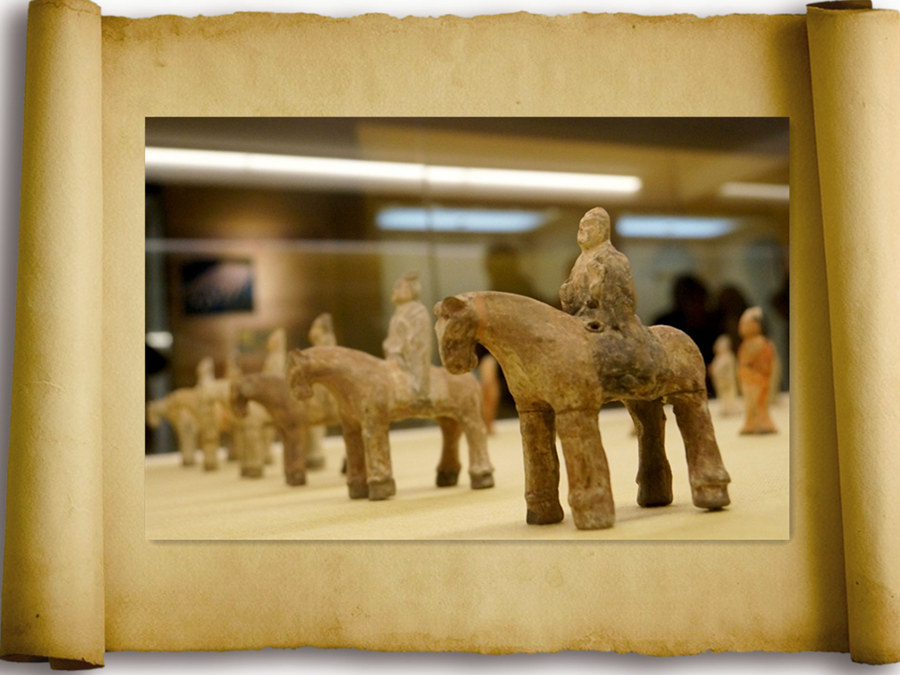Silkroads News
Exploring ancient Silk Road's route, trade and culture
More than 2,000 years ago, industrious and brave people on the Eurasian continent opened trade routes connecting major civilizations across Asia, Europe and Africa. Together they were referred to as the "Silk Road" by succeeding generations.
 |
Maritime routes were an important part of the network, linking East and West, and were used for the trade of spices in particular, becoming known as the Spice Routes.
"Silk Road" is a relatively recent term, and for the majority of their long history, these ancient roads had no particular name. In the mid-19th century, German geologist, Baron Ferdinand von Richthofen, named the trade and communication network Die Seidenstrasse (the Silk Road), and the term, also used in the plural, continues to stir imaginations.
Silk is a textile of ancient Chinese origin, woven from the protein fiber produced by the silkworm to make its cocoon, and was developed, according to Chinese tradition, sometime around the year 2,700 BC.
 |
Regarded as an extremely high value product, it was reserved for the exclusive use of the Chinese imperial court for making clothes, drapes, banners and other items of prestige. Its production was a fiercely guarded secret within China for some 3,000 years, with imperial decrees sentencing to death anyone who revealed to a foreigner the process of its production.
The Chinese monopoly on silk production however did not mean that the product was restricted to the Chinese Empire – on the contrary, silk was used as a diplomatic gift, and was also traded extensively, first with China's immediate neighbors and subsequently further afield, becoming one of China's chief exports under the Han dynasty (206 BC –220 AD).
Indeed, Chinese clothes from this period have been found in Egypt, northern Mongolia and elsewhere.
At some point during the 1st century BC, silk was introduced to the Roman Empire, where it was considered an exotic luxury and became extremely popular, with imperial edicts being issued to control prices.
Knowledge about silk production was very valuable and, despite the efforts of the Chinese emperor to keep it a closely guarded secret, it did eventually spread beyond China, first to India and Japan, then to the Persian Empire and finally to the west in the 6th century AD.
 |
A photo of the 8th century painting, The travel of Zhang Qian to the west, from Mogao caves in Gansu province. Zhang,a diplomat during the Han dynasty (206 BC to AD 220), set out from the capital city of Chang’an (present day Xi’an) and established the first commercial land route between East and West. [Photo/IC] |
On a practical level, merchants had to learn the languages and customs of the countries they traveled through, in order to negotiate successfully.
Knowledge about science, arts and literature, as well as crafts and technologies was shared along the Silk Roads, and in this way languages, religions and cultures developed and influenced each other. One of the most famous technical advances was the technique of making paper, as well as the development of printing press technology.
The routes were also fundamental in the dissemination of religions throughout Eurasia.
Buddhism is one example of a religion that traveled the Silk Roads, with Buddhist art and shrines being found as far apart as Bamiyan in Afghanistan, Mount Wutai in China and Borobudur in Indonesia.
Christianity, Islam, Hinduism, Zoroastrianism and Manicheism spread in the same way, as travelers absorbed the cultures they encountered and carried them back to their homelands.
 |
Stone statues from Northern Zhou Dynasty (557AD-581AD) on display during a Silk Road-themed exhibition in Tianjin, April 11, 2015. |
Coming from France, England, Germany, Russia and Japan, these researchers traversed the Taklamakan desert in western China, in what is now Xinjiang, to explore ancient sites along the Silk Roads, leading to many archaeological discoveries, numerous academic studies and most of all, a renewed interest in the history of these routes.
Today, many historic buildings and monuments still stand, marking the passage of the Silk Roads through caravanserais , ports and cities.
However, the long-standing and ongoing legacy of this remarkable network is reflected in the many distinct but interconnected cultures, languages, customs and religions that have developed over millennia.
The passage of merchants and travelers of many nationalities resulted not only in commercial exchange but in a continuous and widespread process of cultural interaction.
As such, from their early, exploratory origins, the Silk Roads developed to become a driving force in the formation of diverse societies across Eurasia and far beyond.
Category: English
News
Silkroads News
Key words:
